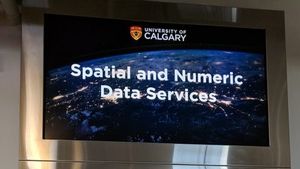In recent presentations I talk about workflow in quite general terms. I suggest that we have seen the focus of our attention shift from the database, to the website to workflow as the web environment becomes richer. We want to get things done on the network, not just find things.
Workflow, in this general sense, may be self-assembled from the range of resources available to us as network services (Flickr, for example); as widgets, extensions, and toolbars; as bookmarks and RSS feeds; and so on. Some folks may have elaborate apparatuses; others less so. However, there are also important prefabrications that may support workflow, course management systems or campus portals for example. And in between there are environments which allow us to compose resources to support what we want to do, My Yahoo or the personalized Google home page, for example. We do not currently share a ‘composition’ environment, although we are seeing a richer shared browser environment emerge, RSS support for example.
In this context I was interested to read a post by Tony Hirst of the Open University. He is talking about ‘personal learning environments’ or PLEs [Wikipedia entry on PLE].
Anyway, I think I’ve worked out what PLEs are – they’re the set of web services we each use for our own purposes; and they’re personal because the combination we use is unique to each of us (oh, you use Google docs do you – I use Zoho; GTalk? I’m on MSN; flickr? no, Photobucket; Typepad? WordPress…) [OUseful Info: Scribd and the Role of Open Repositories]
These remarks are part of a more general discussion about network-level personal resource sharing services (that’s my phrase) such as YouTube, Slideshare, Scribd, Flickr, and so on. As part of our personal digital identity we disclose and share traces and works on the network and we have various ways of doing that. Tony Hirst wonders why JISC in the UK does not support a national level version of a service like Scribd for academic materials. Many institutions, including his own, have institutional repositories but these are “independently hosted” and he is not aware of a discovery service across them. There is a national service, Jorum, for sharing learning materials, but it co-exists with institutional resources such as the OU’s OpenLearn, without, again, an obvious shared discovery service across them.
And he observes:
The problem is, there are just soooooooooooo many places to share content now. And I’m not sure what the solution is? Maybe it’s that I keep all my stuff where I want it, and then share it into the communities I want to, and let search engines/harvesters pull it into other communities where it’s relevant (maybe letting me know when they do, and giving me the option of stopping them). [OUseful Info: Scribd and the Role of Open Repositories]
I thought that this was a really interesting post. For several reasons. First, it highlights how folks are in fact assembling personal digital identities from a variety of tools on the network, piecing them together in ways that make sense to get things done. Second, for me, and this may not be the intention of the post, it underlines some issues of institutional fragmentation. Scale and brand matter, and are connected, and in turn relate to incentives. If I want to manage stuff I may put it one place. If I want to share it with a broad community I may put it another. If I want it to be universally discoverable it needs to be in the right place. A national resource may be more compelling than an institutional one; a network-level one more compelling again. Consolidation has its uses as new network services show. Consolidated discovery is very important, whatever about actually consolidating resources themselves. And finally, it provides some interesting use cases for thinking about how to put institutional – library and other – services ‘in the flow‘ of research and learning behaviors.



